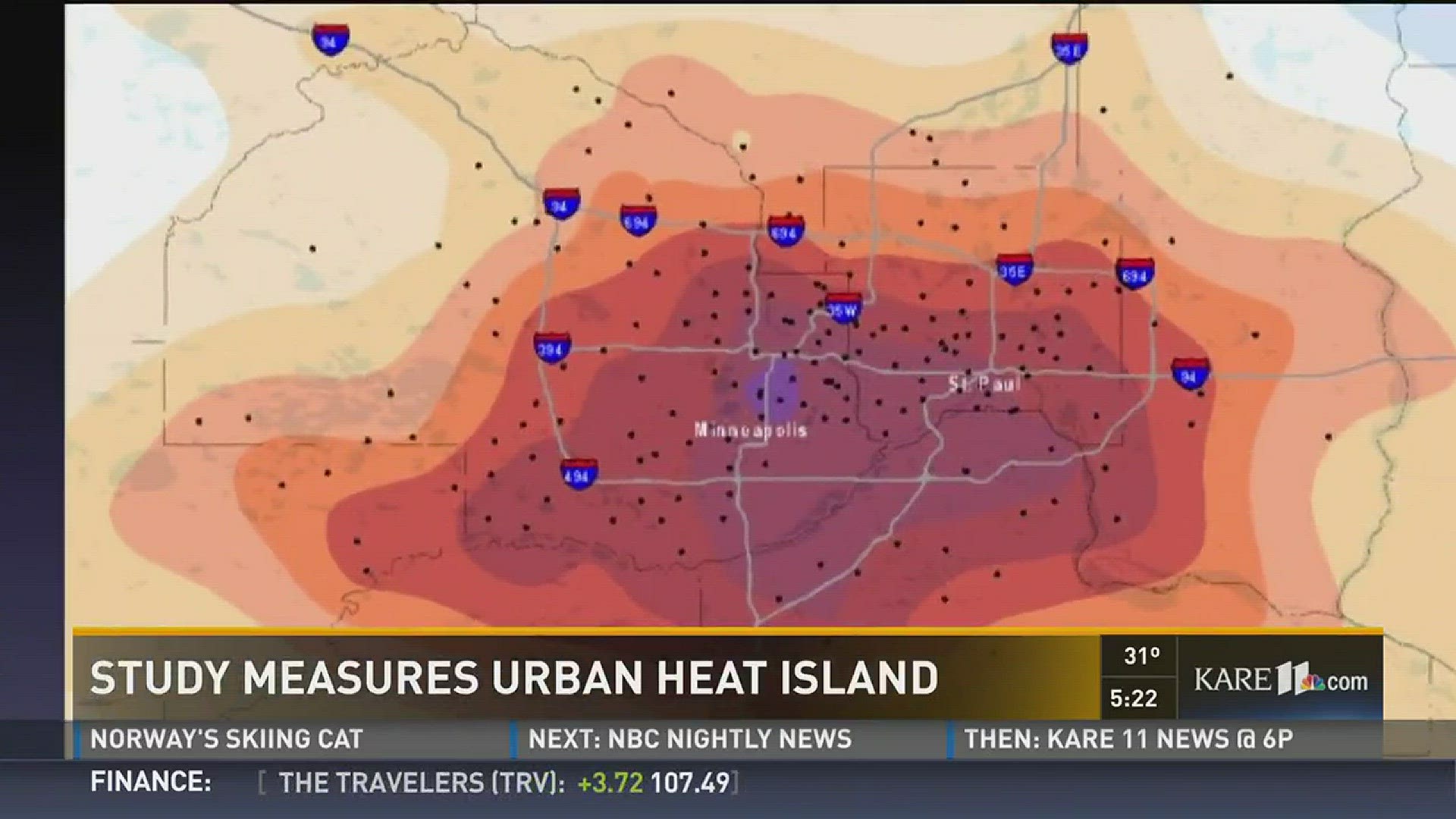MINNEAPOLIS - "We are in the fourth year of a four-year project to characterize the urban heat island of the Twin Cities metropolitan area," said Tracy Twine, University of Minnesota
Let's talk about how an "urban heat island" develops. It starts by the sun heating the ground and buildings. That heat is then absorbed and slowly released. In a urban setting, concrete, asphalt and other materials allow heat to build up, increasing the temperature compared to surrounding rural regions.
The study involved 180 volunteers across the metro who created a 15-minute data set of the temperature. Over the last four years, the data has painted a warm picture.
"We do have our strongest urban heat island in the summer and at night." said Tracy.
The temperature averaged 3 degrees warmer downtown than it did outside the metro. On some days, the observed temperature was almost 9 degrees warmer, which can be dangerous in the summer.
"With this study, we can pinpoint some of those hotter areas, hotter neighborhoods, and those would be places to make sure people are safe during heat waves," said Tracy.
To eliminate the urban heat island effect, Tracy and her team identified that adding reflectivity will help. In the winter we have bright white snow which works well, in the summer, if we can make our rooftops brighter and lighter in color and adding trees to parking lots, we can reduce the urban heat island effect.
For more on their study visit: Islands in the Sun

